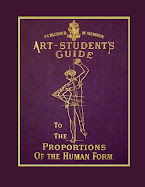 "In drawing hands for comic or comic figures they should be made mainly in outline, because even in a large drawing they are but a small part of the picture. A little shading occasionally helps to show the form of the hand. Be careful, however, not to overdo the shading."
"In drawing hands for comic or comic figures they should be made mainly in outline, because even in a large drawing they are but a small part of the picture. A little shading occasionally helps to show the form of the hand. Be careful, however, not to overdo the shading.""Fig A, Group 1, of the Plate on THE HAND shows a five pointed object. This form is the foundation principle of the hand and represents what we call the palm of the hand. Fig. B shows the fingers added. Note the comparative length of the fingers and thumb. Fig. C shows the palm of the hand developed a little more and Fig D. shows the opposite side worked out. Notice that all of these forms are worked out out from the five-pointed Fig A. Take a pencil and pad of scratch paper and practice on this. You will find it easy to draw hands by using this scheme. The five pointed figure can, of course, be erased and the full outline of the hand can be completed after you have determined its proportion and form."
"Now suppose you turned the five-pointed Fig C. over it was almost flat as in Fig E. The addition of fingers and thumb would give you another view of the hand. This same position of the five-pointed figure can be used to show Fig. F, which is Fig. D turned over."
"Figs. G and H show two views of a hand clutching a stick. The five-pointed figure is used again. Note how the fingers are wrapped around the stick. Take your pencil and try these positions."
"Fig. I show you the relative proportions of the fingers and hand. The knuckles where the fingers join the hand are midway from the wrist to the tip of the longest finger. The main knuckle of each finger is halfway from the back of the hand to the tip of each finger. These are good points to bear in mind."
"In group 2 we take up a number of different kinds of hands in various positions. Now in drawing cartoons, the artist must bear in mind the character of the person he is drawing. For instance, the dude would have thin, delicate hands; a fat man or woman would have plump, round hands; a hobo has rough, freckled or hairy hands; naturally, a woman's hands would be much more slender than those of a man. Bear in mind to make the hands fit the type of figure you are drawing."
"No. 1 shows a hand in the position of holding up a tray or other flat object. Notice that very little detail is used except to indicate the finger nails and knuckles. No. 2 shows one way to draw a negro's hand. Nos. 3, 4 and 5 show three types of women's hands in the position of resting on the hip. I want to call your attention to the way the finger nails are drawn on No. 4. Small circles near the end of the finger are used to indicate them."
"No. 6 shows another way to draw a negro's hand. Here shading lines are used instead of solid black. No. 7 shows a fat woman's hand adorned with rings. Nos. 8, 9 and 10 show rough, freckled, hairy hands, the kind drawn in making a "two-fisted" scrapper."
No. 11 shows an old lady's hand with an old-fashioned silk mitt. No. 12 represents a small boy's mitten, and No. 13 a lady's glove. Notice the seams and stitching at the back of the glove. The suggestions of these details helps bring out the glove. Fig 14. shows a lady's hand holding a wine glass. Compare Fig. 10 which is a man's hand, with Fig. 14, the hand of a woman, and you will catch the idea of the difference in the character. The man's hand is much heavier and shows the knuckles, etc., and the woman's hand is drawn mostly with curved lines."
Charles N. Landon's mail order correspondence course on cartooning instructed young cartoonists in the early 1900s in the fundamentals of drawing cartoon characters, influencing a generation of artists. Carl Barks (Donald Duck, Uncle Scrooge), Floyd Gottfredson (Mickey Mouse), Roy Crane (Wash Tubbs, Buzz Sawyer), Milton Caniff (Steve Canyon) and Jack Cole (Plastic Man) all took the course.
The Landon School of Illustrating and Cartooning
A reprint of the course is available at Enchanted Images.

Popular Science - April 1920, Landon recruited for the N.E.A. Syndicate so it is not surprising that his students were among the recruits, but there was more to it, in some ways he started the course in order to recruit cartoonists to fulfill the demand as newspaper publishing expanded in the early 20th century.
Magazines at Amazon.com:
How to Draw People at Figure-Drawings.com




















No comments:
Post a Comment